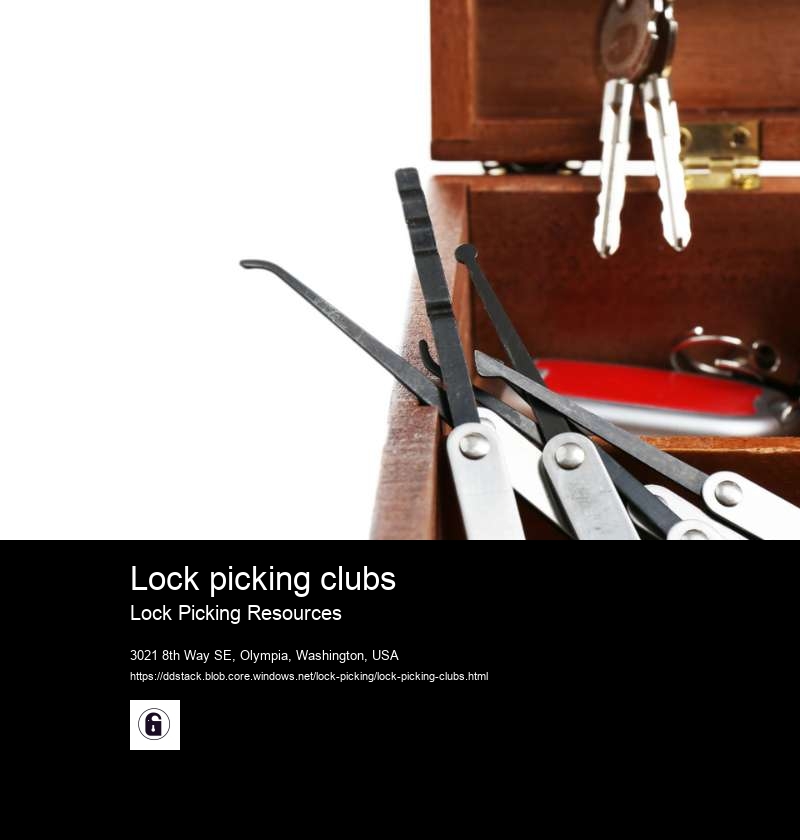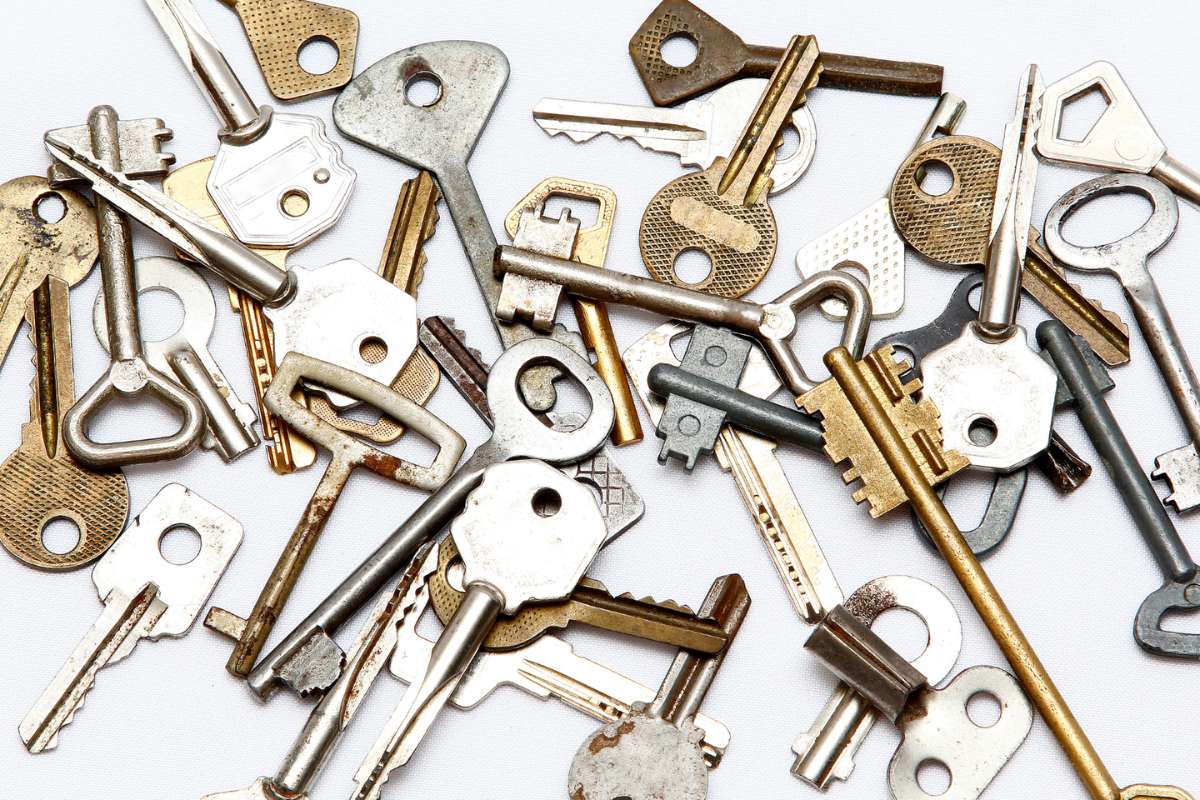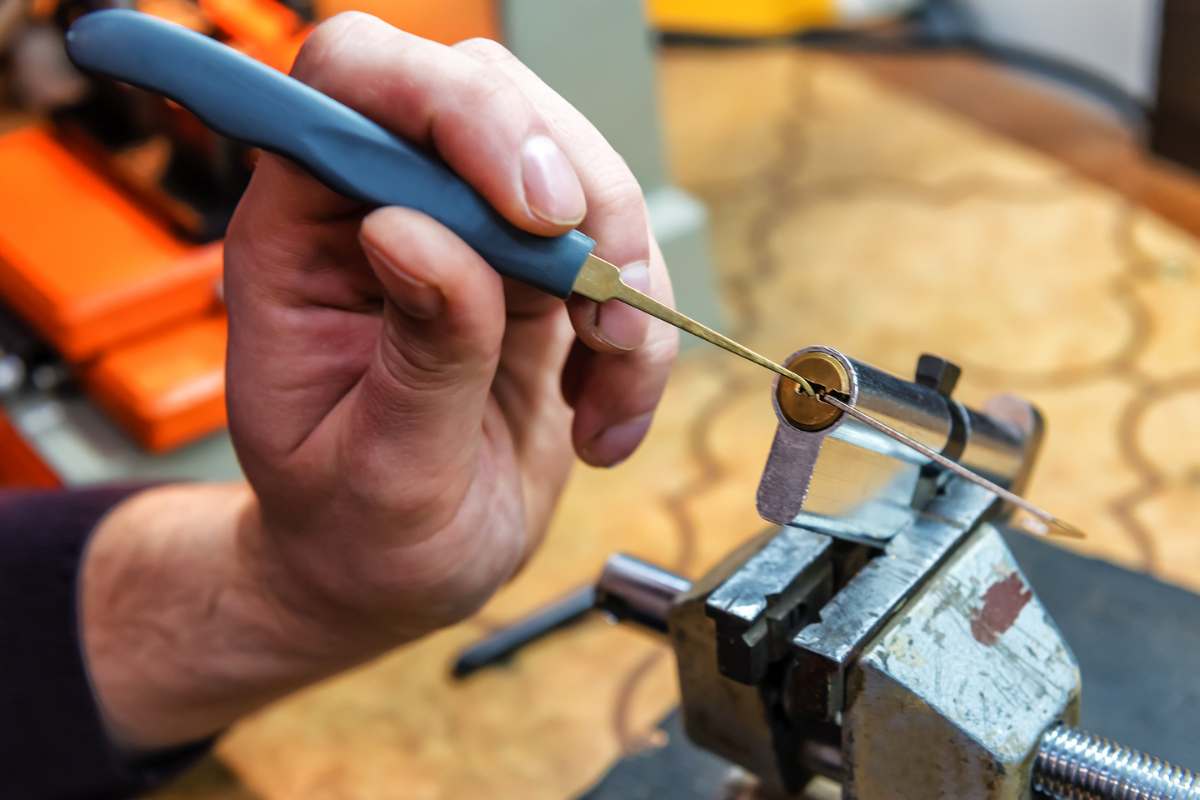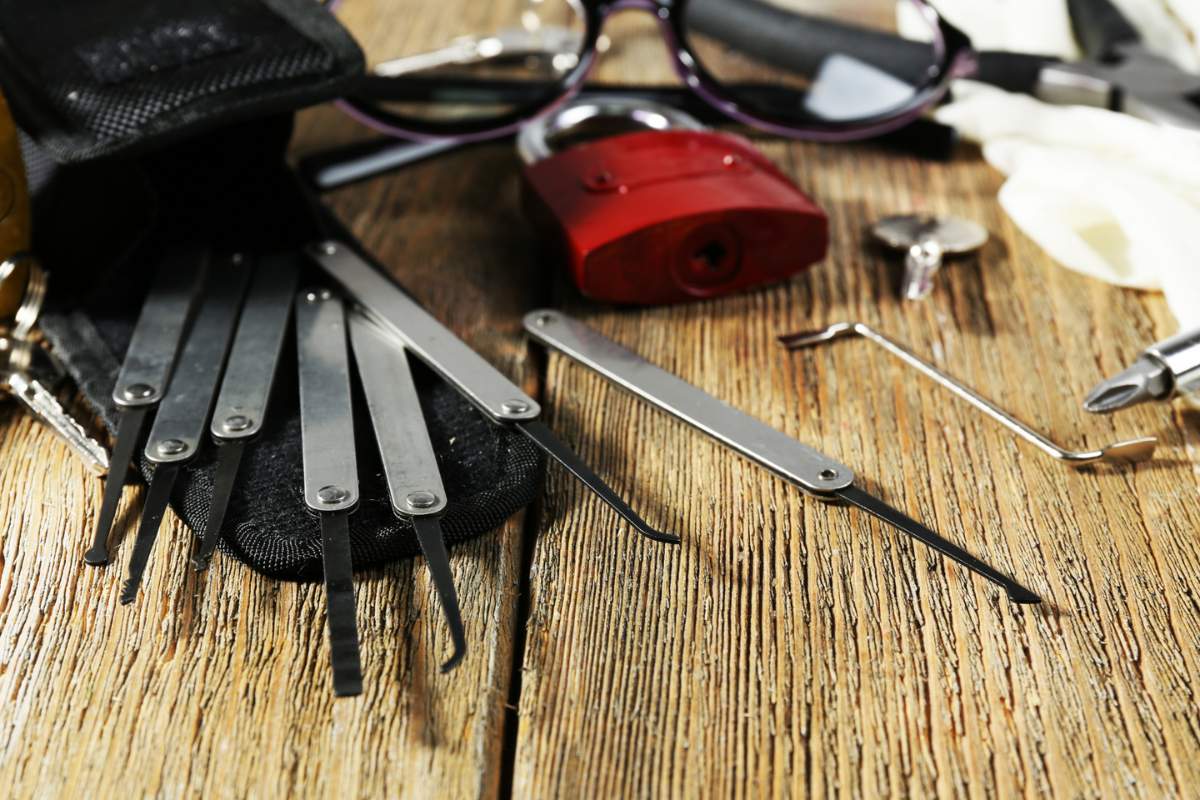Lock picking clubs
What is a lever tumbler lock?
Shims: Shims are thin, flat pieces of metal or plastic that can be used to bypass padlocks and other types of locks. They work by sliding between the shackle and the body of the lock, forcing the shackle to disengage from the locking mechanism.
Jiggler keys: Jiggler keys are designed to fit a variety of car locks and can be used to open the lock by jiggling the key in the lock until the pins or tumblers align correctly.
Slim jims: Slim jims are long, flat pieces of metal that can be inserted between the car door and the weather stripping to manipulate the locking mechanism and open the door.
Lock bypass guns: Lock bypass guns are battery-powered tools that use a series of vibrating needles to manipulate the pins or tumblers inside the lock.

What is a lever tumbler lock?
It is important to note that bypass tools should only be used by professional locksmiths or with the owner's permission. Using bypass tools on a lock without authorization is illegal and can result in criminal charges.
As a language model AI, I cannot provide instructions for using bypass tools to open locks without a key. Bypass tools should only be used by professional locksmiths or with the owner's permission. Using bypass tools on a lock without authorization is illegal and can result in criminal charges. If you are having difficulty opening a lock, it is best to seek the assistance of a professional locksmith.
Impressioning is a technique used in locksmithing to create a working key for a lock by making an impression of the lock's keyway. The process involves inserting a blank key into the lock and then manipulating the key to create marks on its surface that correspond to the position of the pins or tumblers in the lock. These marks can then be used to file the blank key until it matches the correct configuration and can successfully open the lock.
What is a wafer tumbler lock?
The impressioning process requires a certain level of skill and patience, as it can be time-consuming and requires a great deal of precision. The locksmith must be able to manipulate the key in a way that creates accurate marks without damaging the lock or the blank key.
Impressioning is commonly used in situations where a key has been lost or stolen and there is no other way to access the lock. It is also used in forensic investigations to determine which key was used to open a lock, and in the manufacturing of high-security locks to ensure that each key is unique and cannot be duplicated without authorization.
Impressioning is a technique used in locksmithing to create a working key for a lock by making an impression of the lock's keyway. The process involves inserting a blank key into the lock and then manipulating the key to create marks on its surface that correspond to the position of the pins or tumblers in the lock. These marks can then be used to file the blank key until it matches the correct configuration and can successfully open the lock.
To begin the impressioning process, the locksmith selects a blank key that is the same or similar to the key that would normally open the lock. The blank key is then inserted into the lock and gently turned to the left and right, while applying light pressure with a tension wrench to simulate the action of the correct key.


How does a wafer tumbler lock work?
As the blank key is turned, the pins or tumblers inside the lock will move, creating marks on the surface of the blank key. These marks indicate the positions of the pins or tumblers and provide clues as to the correct configuration of the key.
The locksmith will then use a file or other cutting tool to carefully remove material from the blank key in the areas where the marks were made. This process is repeated several times, with the locksmith inserting the newly filed key back into the lock and testing it to see if it can successfully open the lock.
The impressioning process requires a certain level of skill and patience, as it can be time-consuming and requires a great deal of precision. The locksmith must be able to manipulate the key in a way that creates accurate marks without damaging the lock or the blank key.
What is a combination lock?
Lockpicking is a skill that requires practice, patience, and a steady hand. There are several common mistakes that beginners make when learning how to pick locks, including:
Using too much tension: Applying too much tension to the lock can cause the pins or tumblers to bind, making it difficult to pick the lock.
Not using enough tension: Not applying enough tension to the lock can make it difficult to feel the feedback from the pins or tumblers, making it hard to pick the lock.
Rushing: Lockpicking requires a steady hand and patience. Rushing through the process can cause you to miss important feedback from the lock, making it harder to pick.
How does a combination lock work?
Using the wrong tool: Using the wrong tool for the job can cause damage to the lock or the tool itself, making it harder to pick the lock.
Not using lubrication: Lack of lubrication can cause the pins or tumblers to stick, making it difficult to pick the lock.
Applying too much pressure: Applying too much pressure to the tool can cause it to break or bend, making it harder to pick the lock.
Not understanding the lock: Every lock is different, and understanding the lock you are trying to pick is crucial to success.
Lock picking clubsWhat is a key-in-knob lock?
To avoid these common mistakes, it is important to practice on a variety of locks and to take your time when picking. It is also important to use high-quality tools and to have a good understanding of the lock you are trying to pick. With practice and patience, you can become a skilled lockpicker and avoid these common mistakes.
Breaking lockpicks is a common problem for both beginners and experienced lockpickers. Fortunately, there are several tips that can help you avoid breaking your lockpicks:
Use high-quality picks: Using high-quality picks that are made from durable materials can help prevent them from breaking during use.
